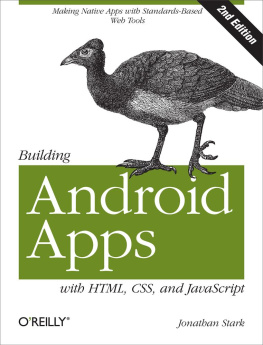This book is first and foremost intended for developers. If you are looking to leverage your existing web development skills and learn how to build modern progressive web apps, this is the book for you.
The book assumes you have at least a basic understanding of web development using HTML and JavaScript. It does not assume any familiarity with relatively newer additions to JavaScript such as ECMAScript 2015, promises, or ECMAScript 2017s async functions. If you are already familiar with these modern language constructs, you should be able to skip (or quickly skim) the notes that explain them.
For people in non-technical roles, this book can help provide a familiarity and a general understanding of the capabilities of modern progressive web apps. Many chapters include case studies collected through interviews conducted with teams behind some of the worlds most influential sites, including Twitter, The Washington Post, Housing.com, and Lyft. Whether you are in a managerial position, a designer, a product manager, or any other position that involves making decisions about native or web apps, an understanding of what is possible today will help you be more effective at your job.
What This Book Covers
As you read through this book, you will take a simple website for the fictional Gotham Imperial Hotel and enhance it with service workers so that it loads almost instantaneously (even on the slowest connections), making sure all of its features are available even when your users are completely offline (including seeing their reservations and even making new ones). You will learn how to let users add an icon to launch your progressive web app from their phones homescreen. Finally, to complete the native app-like experience, you will add push notifications allowing you to reach out and reengage your users even after they have left your site.
This book also explores some of the important considerations when developing progressive web apps. We will focus on gaining a practical understanding of these concepts in a way that will help you be a more effective developer. Among other things, we will look at helpful developer tools, security considerations, and understanding the service worker lifecycle.
While most of the book focuses on hands-on learning, two chapters in particular (Chapters ) will get you thinking about the new capabilities offered by progressive web apps as more than just a new set of tricks to apply to your apps.
explores the philosophy of offline-first web apps, an approach to building modern web apps that treat a loss of connectivity not as an error, but as an eventuality we can plan for and handle with grace.
explores some of the new UI challenges and opportunities presented by progressive web apps. As such a game changer, progressive web apps defy the expectations users have from the web. Some of these challenges include reinforcing the users trust that her data wont be lost when she is offline, informing her that the content she is seeing may be a few hours old if she is offline, and letting her know she can trust the app to send her a notification whenever anything important changes. When handled properly, these can offer great opportunities to increase users trust in your app, improve conversions, and gain a permanent place on their phones.
We end the book with a look at some of the upcoming technologies and browser APIs that will allow us to take our progressive web apps even further.
Conventions Used in This Book
The following typographical conventions are used in this book:
Italic
Indicates new terms, URLs, email addresses, filenames, and file extensions.
Constant width
Used for program listings, as well as within paragraphs to refer to program elements such as variable or function names, databases, data types, environment variables, statements, and keywords.
Constant width bold
Shows commands or other text that should be typed literally by the user.
Constant width italic
Shows text that should be replaced with user-supplied values or by values determined by context.
Tip
This element signifies a case study of progressive web apps in the wild.
Note
This element signifies a general note.
Important
This element indicates a note looking at the same issue from another perspective.









